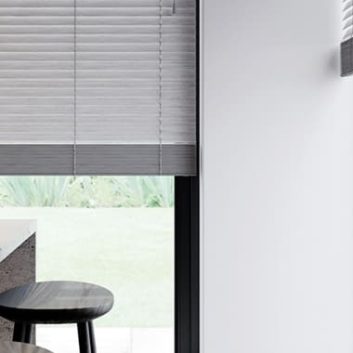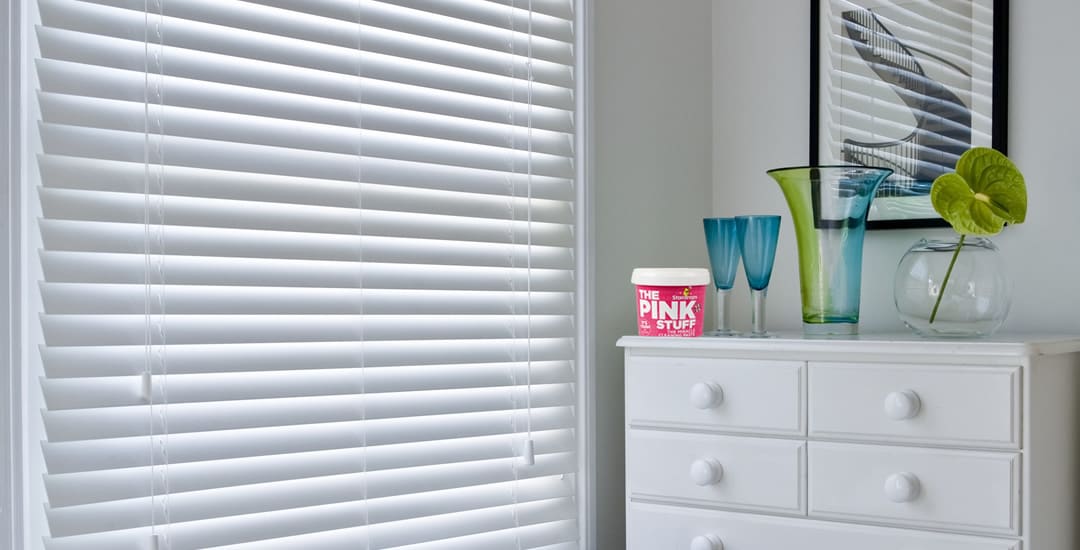
Can you use The Pink Stuff on blinds? No, not without damaging the blind in quite noticeable and irreversible ways, based on the results of my in-house experiments.
Somebody emailed me earlier in the month to ask me this, and always keen to do something outside of my job description if I think I can get away with it (and keen to share the love by helping others skive off wherever possible too) I bought a tub, roped in two colleagues that I find moderately entertaining, and set to a pile of material offcuts from literally every type of window blind we sell.
How did that go? We all had fun, thanks for asking.
Oh, the blinds thing, yeah. A very literal answer to “does The Pink Stuff work on blinds” is that it most definitely removes stains, marks, and gunk from the surface of the blinds we tried it on; but it also removed areas of the finish of the blind itself in most cases too.
It did not discriminate about this at all either, being equally happy to ruin wood, faux-wood, the enamel paint we use on Venetian blinds, and the various soft fabrics that we fed to it as well.
Hopefully that should be enough to put you off using The Pink Stuff to clean blinds entirely, but if you’re Pink Stuff-curious or have read a dodgy Mrs. Hinch blinds cleaning fan tip indicating otherwise, the rest of this blog post will tell you what happens if you use The Pink Stuff on blinds of various different types.
What is The Pink Stuff?
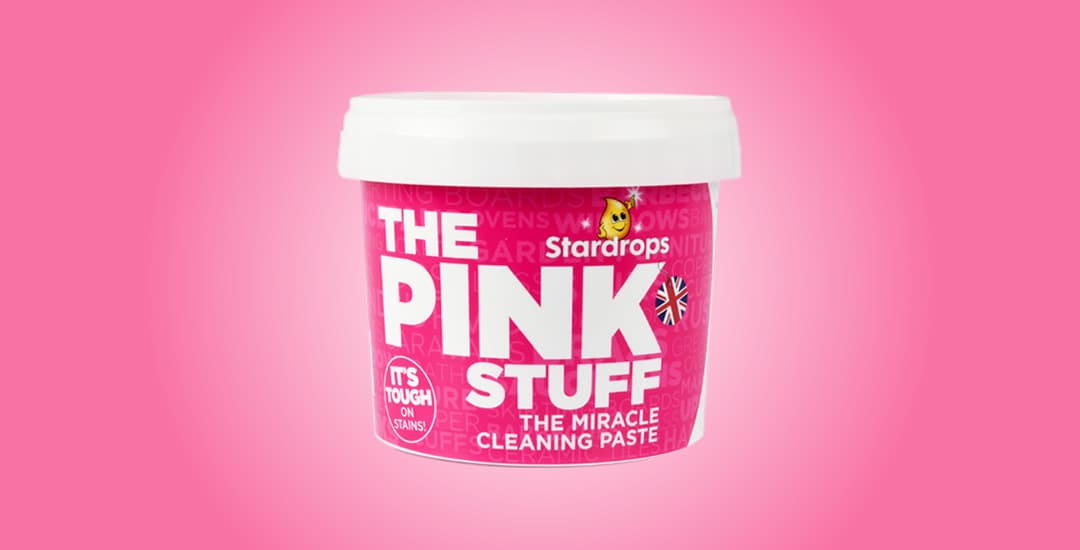
So, before we get onto using it on blinds, what actually is The Pink Stuff? Mrs. Hinch is probably the only reason many of us have even heard of the simultaneously literal and obtusely-named “Pink Stuff,” but she’s such a massive fan of it that many of us now have a tub of it at home ourselves.
Interestingly, The Pink Stuff’s own website is somewhat vague about what The Pink Stuff is specifically intended to clean and what to avoid using it on. Mention is made of it being good to clean rust from metal products like saucepans, and getting stubborn marks or residues off hard surfaces, like that burnt-on gunk your barbecue usually acquires by the end of summer.
Heading out onto the internet-at-large, plus reading the label on tub I bought and also using it on the blinds offcuts I effectively ruined with it, I have gleaned that The Pink Stuff is an abrasive paste cleaner.
You apply it using a cloth or sponge, rub it over the stain or mark you’re trying to send packing, and then rinse or wipe off the product’s residue with water, before polishing it/drying it with a clean cloth.
The fact that it is an abrasive paste means it should be used with care, and so would not be a good bet for use on things like say, enamel baths, marble, or other hard surfaces that may scratch or wear easily, and you’re advised to test it on materials that do look like a goer by applying it to a small, hidden area before getting to work.
OH. One more thing that may otherwise escape your notice; The Pink Stuff is totally pink.
Does The Pink Stuff work on blinds?
So does The Pink Stuff work on blinds? No. Or more to the point, this may depend on how you define “work.” If you mean “does it clean, polish, and otherwise improve a blind safely and without damaging it,” then the answer to this is “definitely not.”
The Pink Stuff may well/almost certainly will lift marks and stains from blinds (other than marks that have permeated the material itself) but it will also lift or damage a large part of what constitutes the blind too, such as its colour, sealant, and/or finish.
Can you clean blinds with The Pink Stuff without ruining them?
Can you clean blinds with The Pink Stuff without ruining them? No, friends, this is a hard no, and I hope to pre-empt a few of you doing just that by heading this idea off at the pass.
Since The Pink Stuff became internet-famous thanks to Mrs. Hinch, blinds and a wide range of other things that might not otherwise have seemed like good candidates for pinking are all crossing people’s radars as potential “goods that may be cleaned using The Pink Stuff.” Mrs Hinch’s blinds cleaning tips don’t mention using The Pink Stuff anywhere, by the way, and she certainly doesn’t suggest it or recommend its use for this purpose.
(Have to wonder if she secretly had a go and then simply disposed of the evidence when she realised it wouldn’t make for good content, but then I’m of a rather suspicious bent in general.)
Mrs. Hinch fans on the internet, on the other hand, share some absolutely wild ideas on cleaning things with things that they weren’t meant to be cleaned with/might never have occurred to anyone else (usually for good reason) to clean with before, to the point that out-Hinching other fans online seems to have become something of a competitive sport.
This is the basic reason why I’m writing this blog post on cleaning blinds with The Pink Stuff being a bad idea, as I suspect that the lone email that triggered this query (and a very sensible guy he is too, asking first rather than telling me what went wrong later) may be just the tip of the iceberg.
Is The Pink Stuff safe on blinds, and what happens if you use The Pink Stuff on blinds?
I hope I’ve got the point across now that The Pink Stuff isn’t safe to use on blinds, because it can and almost certainly will damage them, as borne out by my experiments on a wide range of different materials and fabrics that we use to make blinds from.
If you want to know what happens if you use the Pink Stuff on blinds of different types, here are the results of my experiments, complete with visual aids.
Can you use The Pink Stuff on wooden blinds safely?
No, you can’t use The Pink Stuff on wooden blinds, either painted ones or those stained/left natural in a wood finish. Trying to use The Pink Stuff on wooden blinds is one of the worst things you could do to them, as wooden blinds tend to be fairly costly, and if they are damaged, as a natural material, this will almost always be irreversible.
What happens if you use The Pink Stuff on wooden blinds?
I tried The Pink Stuff on wooden blinds with both a painted finish and a natural finish, and it quickly removed the paint from the painted type and roughened/dulled and discoloured the natural blinds.
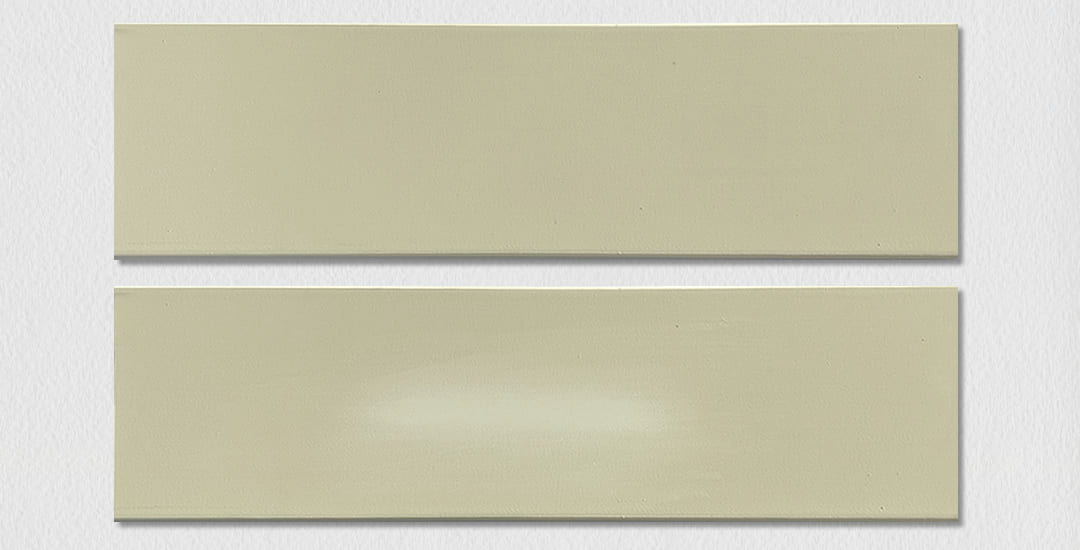
Can you use The Pink Stuff on faux-wood blinds safely?
Faux-wood blinds are made of solid PVC, and are overall the most versatile and hardwearing blinds of all if I had to pick a good all-rounder for all rooms and environments and potentially, a bit of rough treatment from the kids too.
They’re not as pricey as real wood blinds, but are still a reasonable investment and not something you’d want to look at replacing every couple of years. As they’re so hardwearing, they’re often one of the most long-lived types of blinds of all, and the ones that remain in excellent cosmetic condition right through to the end of their lives… Unless you set about them with The Pink Stuff.
The PVC of faux-wood blinds comes in a range of colours and finishes, but it is still a surface coating, which if damaged, cannot be repaired.
What happens if you use The Pink Stuff on faux-wood blinds?
When I tried to clean marks off some faux-wood blinds with The Pink Stuff, it once more removed the surface coating/finish of the blinds, resulting in prominent discolouration. This was on medium coloured fine grained textured faux-wood blinds (below). The effect was still noticeable on lighter colours and even more pronounced on darker colours.
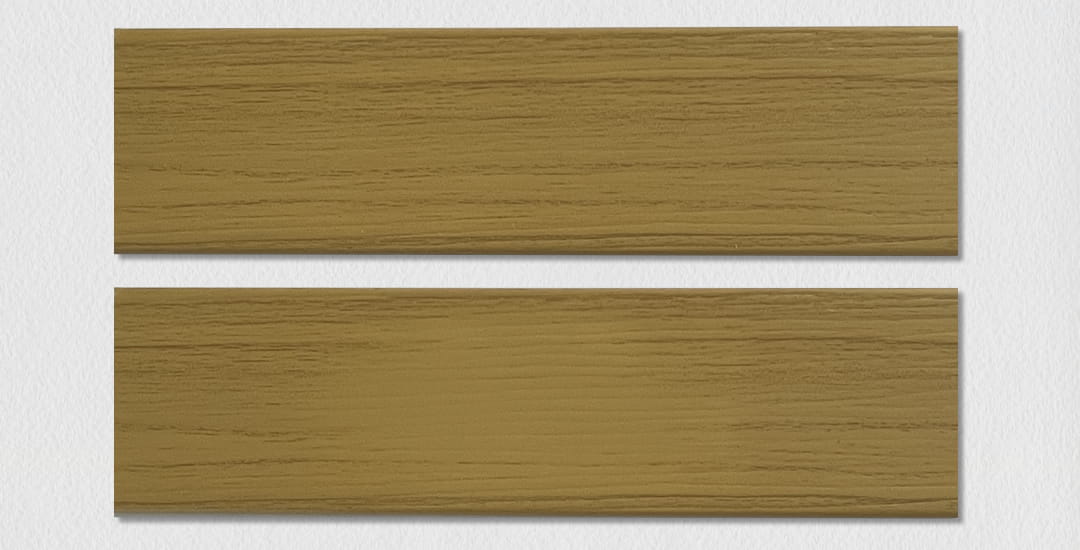
Can you use The Pink Stuff on Venetian blinds safely?
Venetian blinds are made of aluminium painted with a really tough, hardwearing enamel paint finish, the same type that is used on solid fuel stoves and that is designed to last for years without chipping or cracking. However, you can bring your Venetian blinds to an untimely end with little-to-no effort by rubbing them with The Pink Stuff!
What happens if you use The Pink Stuff on Venetian blinds?
The Pink Stuff abraded/dulled the enamel paint finish of our Venetian blind slats, taking the sheen off and making the paint look patchy as a result.
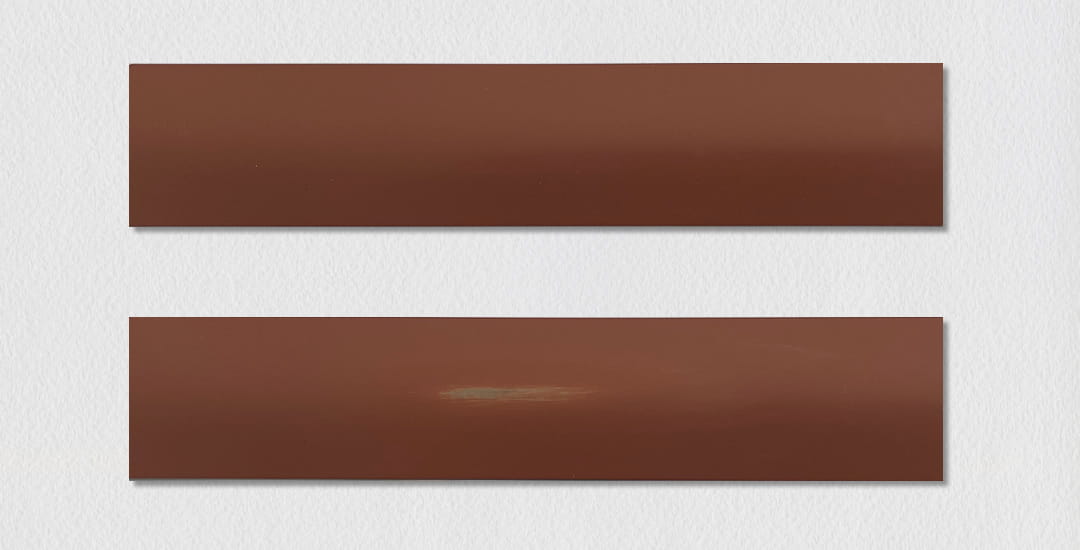
Can you use The Pink Stuff on blinds made of fabric rather than hard materials?
The Pink Stuff is intended for use on hard surfaces rather than fabrics, and I don’t really think many people would get it into their heads that using The Pink Stuff on blinds made of fabric would be effective in the first place.
However, for the sake of being thorough (and of thoroughly avoiding my desk for a little longer too) I also tried out The Pink Stuff on blinds made of fabrics that were both waterproof and non-waterproof, encompassing Roman blinds, roller blinds, day and night blinds, and vertical blinds respectively.
What happens if you use The Pink Stuff on blinds made of non-waterproof fabrics?
Roman blinds and day and night blinds are only available in non-waterproof fabrics, while roller blinds and vertical blinds are often made from non-waterproof polyester. None of these fabrics are intended to be gotten wet, which can mean that cleaning them effectively is a pain or only partially effective if they get marks or stains on them.
The results I achieved by using The Pink Stuff on Roman, roller, and vertical blinds made of non-waterproof fabrics were more or less the same across the board.
It actually removed most of their marks/stains, but it also penetrated the fabrics, leaving a pasty pinkish residue that would not wash off fully. This once more potentially causes a secondary problem by means of introducing water to blinds that should be kept dry, and the residue that The Pink Stuff itself left actually made the treated areas of the blinds look dirtier/worse than they did before!
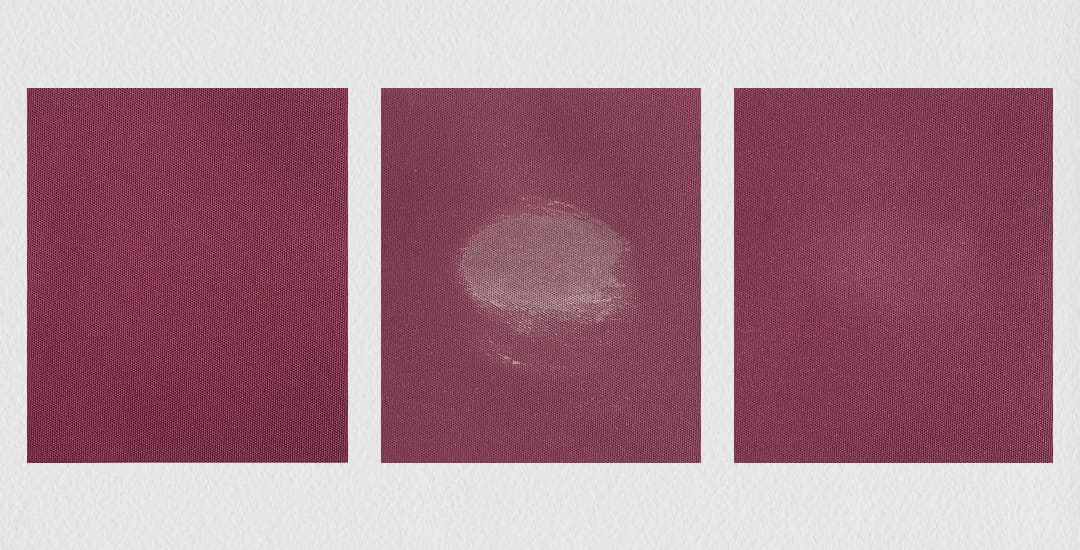
When it came to using The Pink Stuff to clean day and night blinds, the same dirty mark-inducing effect was achieved on the opaque areas of the fabric, but on the far finer, sheerer stripes of the blind, well, to quote Ben who helped me with this experiment, “wow, that’s an absolute disaster.”
Not only was it not possible to fully remove the paste from the fabric after use, but the residue looked far worse against the sheer fabric, and the abrasive nature of The Pink Stuff itself plus the scrubbing/rubbing pulled and warped the fabric somewhat too.
What happens if you use The Pink Stuff on blinds made of waterproof fabrics?
Both roller blinds and vertical blinds can be made in waterproof fabrics, which are either PVC or vinyl respectively, neither being innately better than the other and both being hardwearing and designed to withstand any amount of contact with water.
When it comes to using The Pink Stuff on blinds like these made of waterproof fabrics, it did seem ok, in terms of removing marks and stains without penetrating the fabric and so, leaving a residue.
However, there are two issues that I can foresee with doing this nonetheless; the first being that using The Pink Stuff in this way is overkill, and the sort of move you might make only if you had literally nothing else to clean them with, like washing up liquid or any other form of cleaning spray or detergent.
As they’re waterproof, PVC and vinyl fabric blinds don’t absorb stains or muck; and as marks and grime only sit on the surface of them, they need minimal effort with a mild detergent or cleaning solution and a damp cloth to restore them to cleanliness.
The other issue I predict with using The Pink Stuff on blinds made of PVC or vinyl fabric is that if you do this regularly/repeatedly, it may well begin to abrade and damage the fabric, once more causing cosmetic damage that can’t be repaired.
Can you clean blinds with The Pink Stuff if you’re really gentle, and how hard did I have to work to achieve the results above?
In closing, it might be worth explaining how I executed this experiment, which is that I tried to emulate using The Pink Stuff on blinds in the same way that I’d expect someone at home to do it, based on how I’ve seen The Pink Stuff applied and used in the YouTube videos I watched for reference.
I didn’t apply undue pressure, but I did rub/scrub at the blinds quite rapidly and firmly, and the damage you see on each of the various blinds shown above was achieved within about five seconds in each instance.
What I’m getting at is that it didn’t take a lot of effort or protracted periods of time to damage blinds with The Pink Stuff, and I certainly wasn’t aiming to achieve a result of “don’t use The Pink Stuff on blinds” ahead of time due to any personal biases or preconceptions.
I would have been equally happy to have learned that it successfully and safely cleaned marks without damaging the blinds, and actually, that would probably have resulted in a more effective blog post in terms of its value to you as the reader, and also its value to me as the author in my ever-elusive hunt for internet-influencer stardom…
Any pearls of wisdom to share?
I’m always interested in new ideas when it comes to cleaning blinds, and will always have a go at any blinds cleaning tip or “hack” I come across in order to share the results in much the same way as a I have here.
I field a reasonable number of questions via email each month too about cleaning blinds in different ways and/or asking if a certain approach will work and be safe.
In the majority of cases I have already tried/covered these before, but if you’ve had an idea and don’t want to find out the hard way why it won’t work, or have tried something out that I may not have thought of, please email me or tell me in the comments and I will have a go and let you know what happens!

